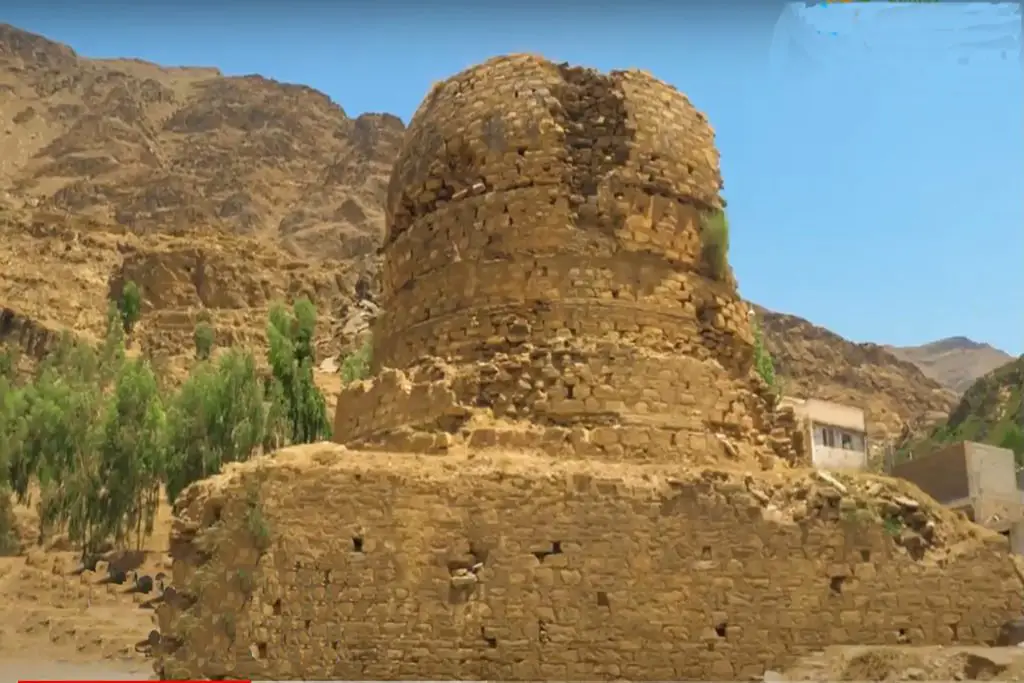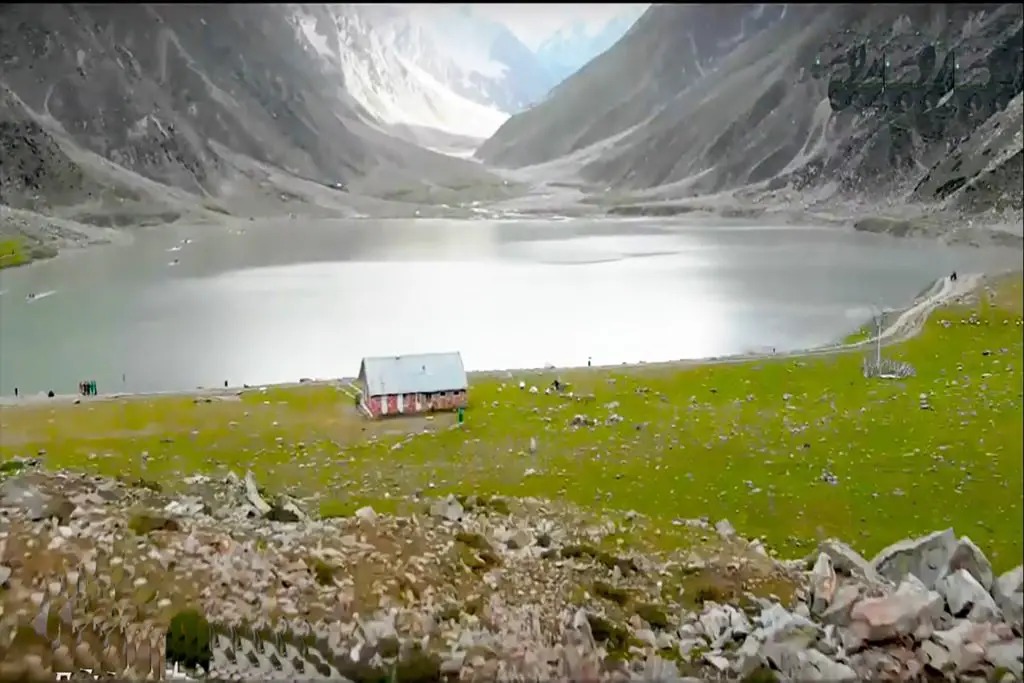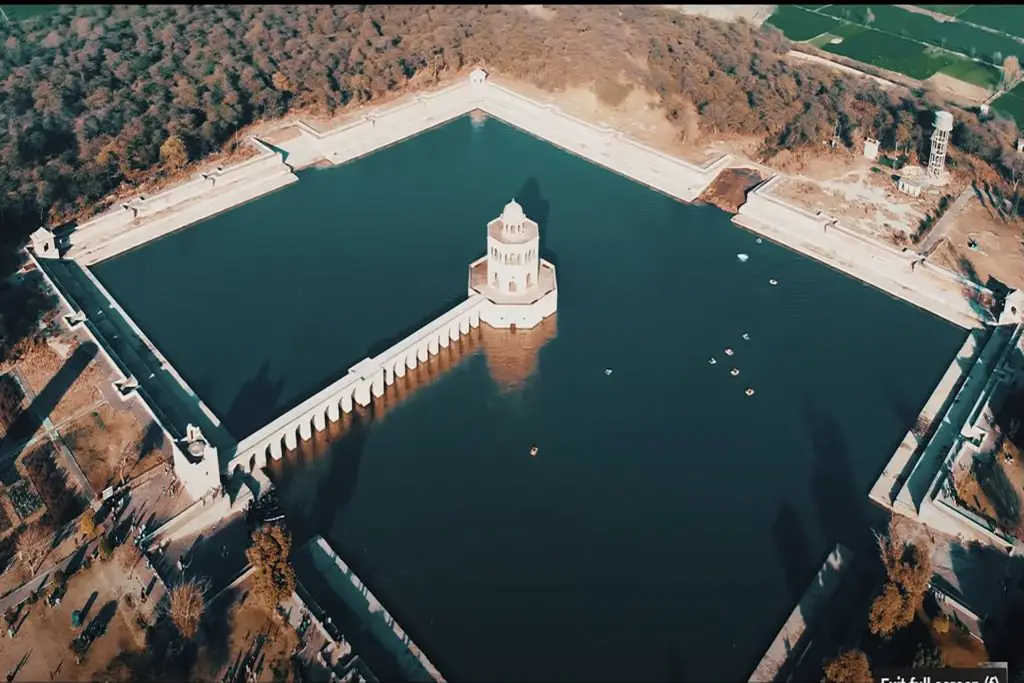Gumbatuna Stupa, commonly known as Gumbat Stupa, is a Buddhist stupa dating back to the 2nd century, situated in the Swat Valley of Pakistan. Positioned approximately 9 kilometers south of Birrkot in the Kandag Gandhara Valley, it holds a significant place in the region’s cultural and historical landscape.
The stupa’s initial documentation can be traced back to 1930 when A. Stein identified the main stupa and votive stupas during his exploration. Subsequently, another archaeologist delved into the area, further unraveling its archaeological secrets.
Covering an expansive area of 1500 meters in width and 1000 meters in length, the remnants of Gumbat Stupa underwent restoration efforts in 2011-2012. A thorough excavation of about 25% of the terrace took place in 2011, revealing the intricate details of this ancient site. Radiocarbon dating provides insight into the shrine and buildings, suggesting their construction in the 2nd century.
Nestled in the lower zone, the main stupa boasts a plinth measuring 17 meters on each side and a projection of approximately 3.7 meters. Atop the dome, remnants of Harmika and umbrellas stand as echoes of its historical grandeur. The stupa’s architectural features include two terraces, a cloister, and a double-domed dome, encircled by more than 20 smaller stupas.
Gumbat Stupa, with its rich history and architectural magnificence, stands as a testament to the enduring legacy of Buddhism in the Swat Valley, inviting exploration and contemplation amidst the scenic beauty of the Kandag Gandhara Valley.
Gumbat Stupa Location
Situated on the right bank of the Swat River, approximately 9 km west of Barikot village, the Gumbatuna site is a Buddhist complex. The name “Gumbatuna” derives from the Pashto word “Gumbat,” meaning dome. This historical site is positioned along the well-traveled road leading towards Nimogram, nestled in the expansive valley drained by the Swat River.
The archaeological remnants of Gumbat Stupa extend over an impressive area, spanning 1,500 meters from north to south and 1,000 meters from east to west. These remnants are scattered across wide terraced fields that gracefully slope into the hills beyond, known as the Shamozai Range. The Swat River meanders through the valley, weaving through several braided channels, adding to the picturesque landscape.
In this serene setting, Gumbat Stupa preserves its historical significance amidst the natural beauty of the region. The sacred area is enriched by the presence of a spring nestled in a charming ravine to the north, contributing to the overall allure of this ancient Buddhist establishment.
Excavation of Gumbat Stupa in Swat, Pakistan
During the initial season of excavations, the focus was primarily on the terraces constituting the expansive main stupa and the votive stupas that had been partially exposed by previous treasure hunters. The central terrace, forming a circular monastery, is presently integrated into the modern village of Gumbatuna. Ascending to the upper terrace reveals an array of monastic residences, caves, viharas, and stupas, reflecting the multifaceted historical layers of this archaeological site.
Main Stupa
In the lower zone of the Gumbat Stupa, a central focal point comprises the main stupa, flanked by a votive stupa, and columns enclosed by a surrounding wall. The main stupa, a remarkably well-preserved structure in ancient Udyana, features a square plinth measuring 17 meters on each side. The plinth includes an offset projection, measuring 3.71 meters in length and 3.82 meters in width for the east step.
This colossal stupa, standing as a testament to ancient craftsmanship, is comprised of a dome, upper, and three lower drums, resting on a square podium and a round slab. The structure above the dome originally housed an accordion and umbrellas, now regrettably absent.
The Gumbat stupa follows a square plan, with a base adorned by a straight Scotia pattern (H.O 50cm). The podium or square plinth reaches a height of 3.90 meters from the top, featuring a corbel-style crown (h. 0.35 cm) protruding from slate slabs.
The Pradakshina patha encircling the drum is meticulously paved with large slate stone slabs, ranging from 0.20 to 0.60 cm in width. Notably, the base of the first drum retains square pillars’ bases in the four corners, indicating the stupa’s past embellishment with four pillars, a decorative feature found in other Swat Valley stupas like Saidu, Najigram, and Amlukdara.
The cylindrical drums of the Gumbatuna stupa, standing at a height of 04.70 meters, culminate in a hemispherical dome with a height of 04.80 meters and a diameter of 10 meters. Unfortunately, relic hunters have left a 2-meter-wide shaft, penetrating from top to bottom, on the eastern side.
To ascend the Gumbat stupa, twelve steps on the eastern side lead to the top of the podium, complemented by a slate stone bypass around the plinth. The main stupa’s masonry is intricately crafted in a diaper pattern, showcasing the finesse of ancient architectural techniques.
Architectural of Votive Stupas
The central stupa at Gumbat was encircled by 27 votive stupas, varying in size and all sharing a square plan, crafted in the intricate diaper masonry style. The ground surrounding these smaller stupas was meticulously paved with slate stone slabs, enhancing the overall architectural finesse.
While the lower sections of the votive stupas remain intact, the upper portions are missing, with the exception of Nos. 16 and 27, which extend up to the drum level. The plinth facing, exhibiting the diaper masonry style in some instances, displays a smooth finish. Interestingly, votive stupas numbered 14 and 15 feature embellishments with Corinthian pilasters, adding a touch of decorative elegance to their architectural composition.
Gumpatuna Stupa History
Excavations at Gumbatuna focused primarily on the north, south, and west sides, with the area in front of the main stupa remaining untouched in the ongoing rescue operation. The limited scope of excavation was necessitated by the unfortunate interference of statue looters who, despite disturbances, unveiled a significant number of statues and an impressive stupa complex.
The discovered sculptures encompass depictions of Buddha, and bodhisattvas, as well as various architectural elements crafted in stone and stucco. Remarkably, the site did not yield any coins that could have served as potential indicators for absolute dating.
Despite the absence of numismatic evidence, the sculptures, characterized by their use of stone, stucco, and diaper masonry, suggest an affiliation with the early Kushana era. Consequently, it is plausible to surmise that the Gumbat stupa site thrived during the 2nd century AD, persisting until the 7th-8th century AD. This chronological span provides valuable insights into the historical timeline and cultural evolution of this significant archaeological site.







